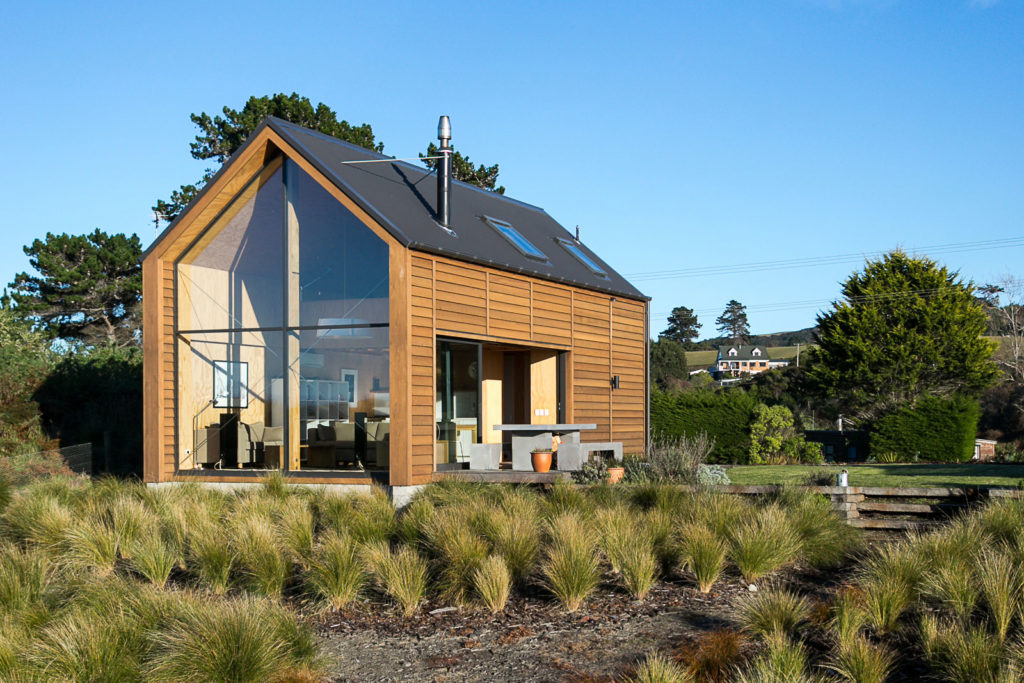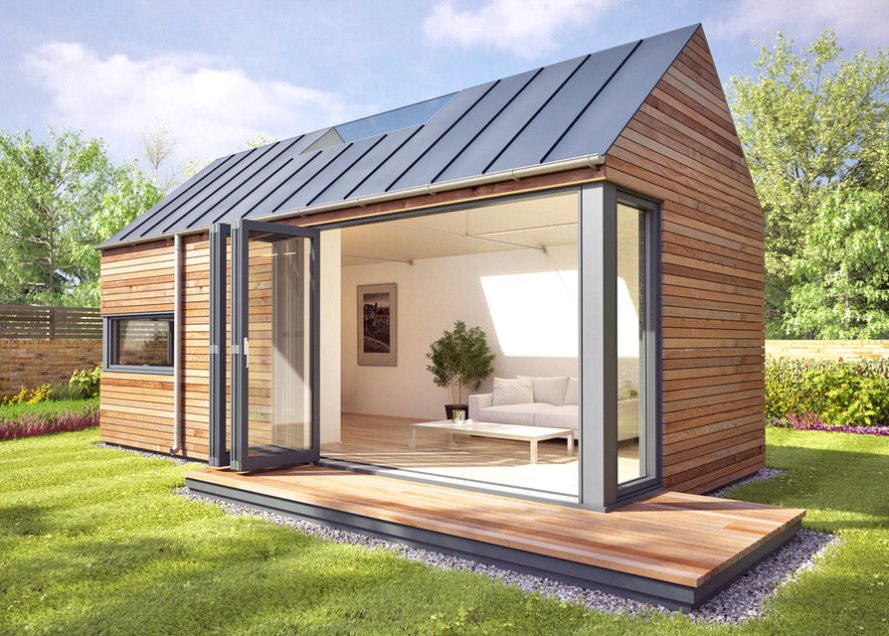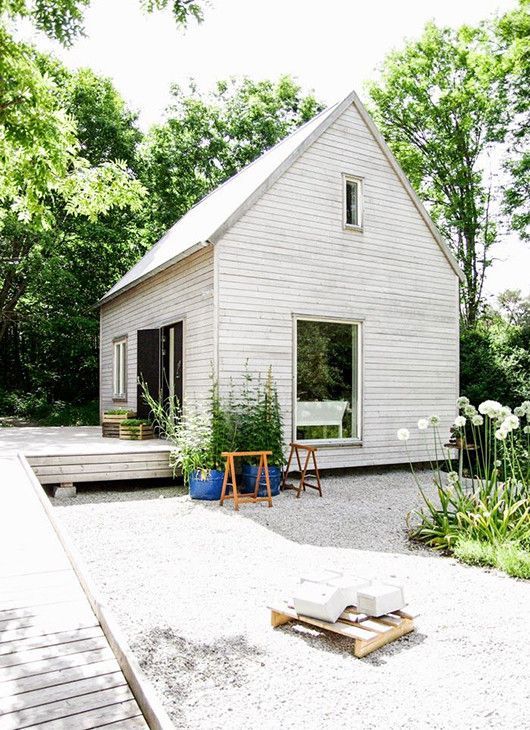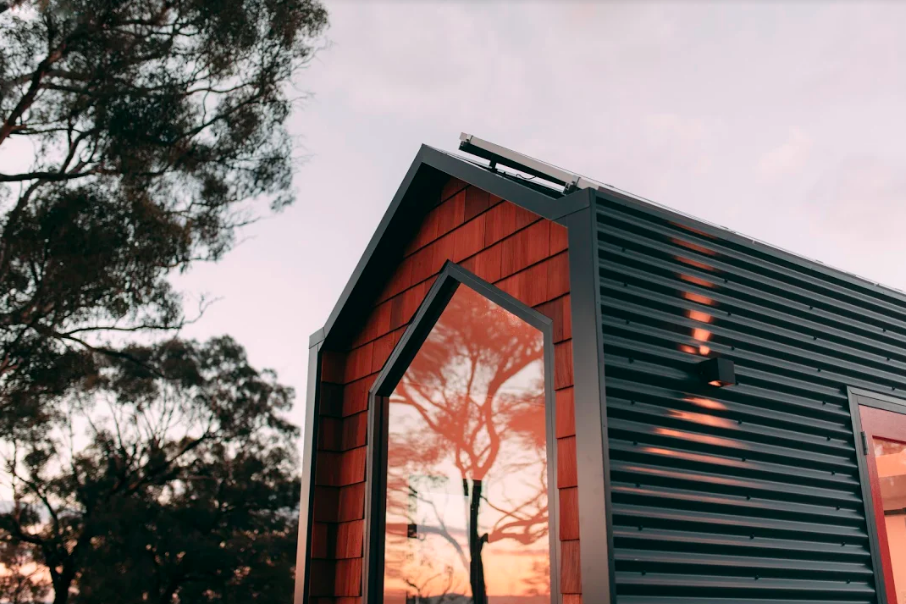By Andrea Hamblin
Going a little stir-crazy in your house during a lockdown?
Imagine being confined to a home the size of a lounge room instead.
That’s the reality for Melbourne’s Elle Paton, and she wouldn’t have it any other way.
“My world has shrunk … life is streamlined,” she said.
Like many other “empty-nesters” whose kids have left home, Ms Paton has downsized – only to a whole new level.
She’s moved from her apartment into the centre of a “tiny” suburban experiment she hopes could shift the way governments oversee the great Australian dream of homeownership.
The tiny house has everything Ms Paton needs. Her lounge room doubles as her bedroom (and a home cinema). Her dining table top lifts up for dual use as a workspace. There’s a bathroom with a compost toilet. A ladder leads to a loft space that can be a spare room or reading nook.
Having a house with a tiny footprint means more backyard space for vegetable gardens – and the bills are negligible because the house is off-grid.
“During (2020) lockdowns I was pulling around 70 per cent of my own food out of the garden while people were at the supermarket panic-buying,” Ms Paton said.
“In a tiny house you don’t have that option (of stockpiling) but you also have the security of very small overheads in times of economic uncertainty.”
The stylish portable home is parked on a block in busy St Kilda, only six kilometres from Melbourne’s CBD. It’s the first Australian “tiny house” to have council permission for long-term occupancy in an urban environment.
The approach is different in a part of New South Wales where Isla Hughes and Rob Gasper are making a move they know isn’t exactly legal.
They plan to tow a ‘tiny house’ on skids to a block of land they own in bushland in the Southern Highlands.
Going bush isn’t something they thought they’d have to do – but the pandemic has made many of us embrace another ‘p-word’ pivot. Patience, too.
Ms Hughes and Mr Gasper were meant to be preparing to hit the road for a trip around Australia. They sold their stuff and moved out of their Sydney flat just before the Delta outbreak shut down the city and state borders.
“We’d been selling our furniture, putting things in storage,” Ms Hughes said.
“Anyone who was planning to move in July was not expecting this.”
The couple is paying $700 a week to lockdown in a small Airbnb with their pet dogs. They believe it makes sense – financial and for their health – to live in the portable dwelling that they already owned and used for their business.
“We are going to be isolated up there – it’s the best social distancing,” Ms Hughes said.
“It’s a stop-gap until we can move around again.”
With rent and house prices increasing to record levels across Australia, Ms Hughes and Mr Gasper – a teacher and finance professional, respectively – also don’t want to take up a rental property that could go to residents more in need during the pandemic.
“Homelessness is on the rise. You see the most heartbreaking stories,” Ms Hughes said.
Ms Hughes said she and her partner are prepared for the possibility of a legal battle as tiny houses fall in a “grey area” of legislation that is often left up to councils to interpret.
In 2018, another Sydney couple won a court case against Camden Council, which had claimed a tiny home on wheels parked in a driveway had to be removed. NSW Land and Environment Court (LEC) ruled that though the dwelling had cabin-like characteristics, the wheels and trailer registration meant it could be considered a caravan.
In a landmark decision two years prior, the Queensland Building and Development Dispute Resolution Committee, also ruled tiny homes with wheels should be treated like caravans and thus do not require a building permit. how
“Most people in this situation don’t have the money to hire a lawyer,” Ms Hughes said.
“It needs people like us to do the challenging so that people without the money can follow.”
There are signs council attitudes are changing. Mostly because local leaders are starting to see how amending laws to allow for tiny homes could be a way to combat a growing housing affordability crisis.
Byron Bay Mayor Michael Lyon said locals had been displaced even before the pandemic because the popularity of Airbnb had driven up rental prices. More people moving to the town to work remotely increased competition and pushed up prices, contributing to a “housing emergency” as rental availability hit close to zero.
The Shire wants to build tiny homes in the town’s rail corridor to give local workers in need of affordable housing somewhere to live.
“We’ve got jobs available but no one to do them because no can afford to live here,” Cr Lyon told The New Daily.
“We’ve got to start changing our way of thinking.”
Colac-Otway Shire in Victoria has also declared a crisis because there aren’t enough affordable homes for local workers, with Mayor Kate Hanson telling The New Daily building tiny houses could be one solution.
“AirBnBs have a played a part, COVID has played a part,” Cr Hanson said.
“Some businesses are being forced not to open some days because they have no staff. “
The nearby Surf Coast Shire, where rental availability hit zero during 2020, has also been conducting surveys on community attitudes towards tiny houses.
Cr Hanson said councils would need state government support, such as through staff or funding to investigate planning law changes.
Governments already embraced the tiny house movement somewhat following the 2020 Black Summer bushfire emergency, allowing victims of the Gippsland, NSW south coast and Kangaroo Island fire to live in tiny houses. In NSW, local law now states bushfire victims can stay in a “moveable dwelling” for up to two years.
Laws about tiny houses vary depending on who lives in them, for how long and whether the building is fixed, on skids, or on wheels. But, in general, planning regulations treat them like caravans and don’t permit their use as permanent housing.
To navigate the confusing rules, tiny-house owners have been collating their own database to record their experiences with each council around Australia.
Some owners told The New Daily they were fearful of speaking about their living situation in case they were evicted.
Instead, they try to live “under the radar” and are careful about who they invite over or tell about their living arrangements.
Queensland man Greg Hack said he faced opposition from his local council until he told them he had no other choice.
The electrician said he lost about $250,000 worth of scheduled jobs when the pandemic hit.
Mr Hack, his wife and their three-year-old son are now doing lockdown in a caravan on their block of land while they build a tiny house out of a shipping container.

“We’ve been clever in the design,” he said, adding that at $50,000 the build has been much cheaper than a traditional family home.
“We’re not going to go without and if anything it’s going to make us want to get outside more.”
Fellow Queenslander Mel Sparkles is also living in a renovated caravan on a bush block while she finishes her tiny house.
At age 57 and no longer working in a full-time role, the graphic and building designer said it had been difficult to get a home loan.

“The banks don’t want to look at you,” Ms Sparkles said.
“My age is a real deterrent.”
Tasmanian woman Anna Ekstrand, also in her 50s, is another moving into a tiny home to avoid the risk of taking on a large mortgage.
“House prices here are out of control and though I had a home loan pre-approval I chose a tiny to have a more comfortable future,” Ms Ekstrand said.
With women over 45 now one of the fastest-growing groups of Australians becoming homeless, Ms Sparkles said she wanted to shore up her future by finding an inexpensive parcel of land where she can live cheaply and securely.
“You go for a walk in your local park and there’s bound to be someone who has slept in their car. It’s heart-wrenching,” she said.
“We’re at a tipping point. Something has to change and COVID has given the world the opportunity to consider alternatives.”


